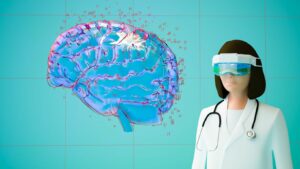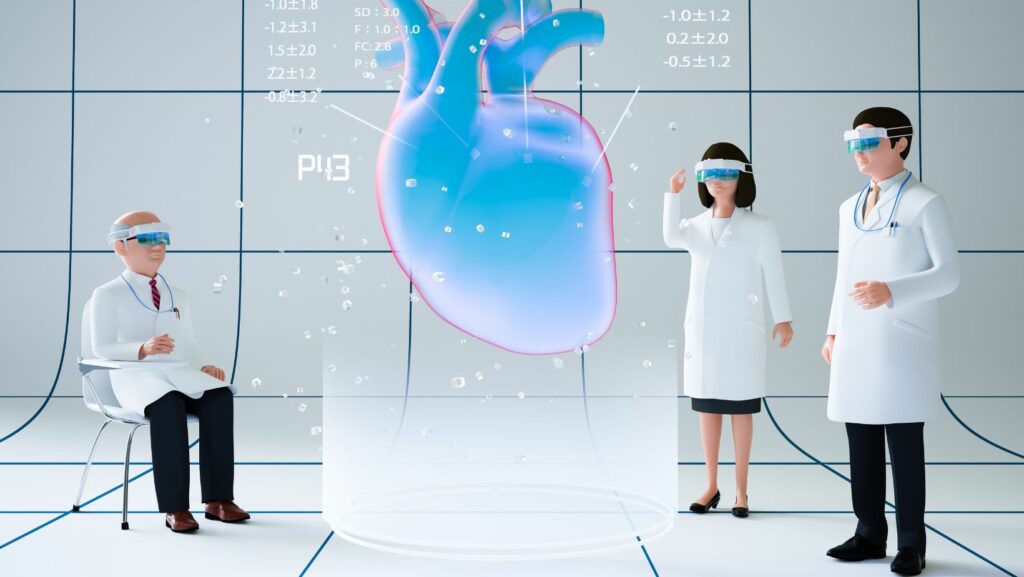As a seasoned blogger in the realm of cutting-edge technologies, I’ve witnessed firsthand the transformative power of augmented reality in revolutionizing the healthcare industry. Imagine a world where medical professionals can visualize complex surgical procedures with unprecedented clarity, or where patients can receive personalized treatment plans through immersive AR experiences. In this article, I delve into the realm of augmented reality in healthcare, exploring its potential to enhance patient care, streamline medical training, and push the boundaries of innovation.
With AR paving the way for more precise diagnostics, minimally invasive surgeries, and enhanced patient outcomes, it’s clear that the intersection of technology and healthcare is reshaping the way we approach medical practices.
Augmented Reality in Healthcare
The Definition and Technology Behind Augmented Reality

Augmented reality (AR) is a technology that overlays digital information such as images, videos, or 3D models onto the real world in real-time. It enhances the user’s perception of the environment by providing additional context and information. In healthcare, AR is utilized to superimpose medical information onto a patient’s body, aiding in diagnostics, surgical planning, and medical training.
AR technology works by using sensors and cameras to capture the physical environment, then processes the data to integrate digital elements seamlessly. By wearing AR headsets or using AR apps on devices, healthcare professionals can access vital information without shifting their focus away from the patient, leading to more efficient and accurate medical procedures.
The Historical Evolution in the Medical Field
The integration of augmented reality in healthcare represents a significant advancement in medical practices, building upon decades of technological progress. From the early applications of AR in medical simulations to the current use in surgical navigation and patient education, the evolution of AR in the medical field has been transformative.
Medical professionals now have access to detailed anatomical overlays during surgeries, allowing for precise incisions and minimizing risks. Additionally, AR facilitates improved communication among healthcare teams by enabling real-time data sharing and collaborative decision-making.
Impacts of Augmented Reality on Medical Training and Education
Enhancing Anatomical Understanding
Incorporating augmented reality (AR) into medical training programs allows for unparalleled enhancements in anatomical understanding. AR technology facilitates the creation of detailed 3D models and overlays them onto real-world scenarios, enabling me to visualize complex structures like the human body with precision. This visual aid enhances my learning experience by providing immersive insights into anatomical structures, improving my grasp of intricate medical concepts.
Simulation of Surgical Procedures
Augmented reality’s integration into medical training extends to the simulation of surgical procedures, offering me a realistic and interactive platform to practice various surgeries. Through AR-powered simulations, I can immerse myself in lifelike surgical scenarios, honing my skills in a risk-free environment. By replicating intricate surgical procedures with accuracy, AR enables me to gain practical experience and refine my techniques under simulated conditions, ultimately enhancing my surgical proficiency.
Augmented Reality Assisting in Complex Surgeries
Preoperative Planning and Visualization

In complex surgeries, such as tumor removal or organ transplants, augmented reality (AR) plays a crucial role in preoperative planning and visualization. It enables me to superimpose digital information, like 3D anatomical structures or medical images, onto the patient’s body. This integration allows me to have a comprehensive understanding of the patient’s specific anatomy and pathology before entering the operating room. By visualizing the patient’s internal structures in a more detailed and interactive manner, AR assists me in creating precise surgical plans tailored to each individual’s unique anatomy, improving the overall procedure’s accuracy and reducing risks during surgery.
Intraoperative Guidance and Support
During complex surgeries, real-time guidance and support are essential for achieving optimal outcomes. Augmented reality provides me with invaluable intraoperative assistance by overlaying critical information directly onto the surgical field. As I perform the procedure, AR technology can project vital data, like navigational cues, 3D reconstructions of the patient’s anatomy, or live imaging results, in my field of view. This live augmentation enhances my spatial awareness, helps me navigate complex anatomical structures more accurately, and allows for more precise execution of surgical steps. Ultimately, augmented reality elevates the level of precision and efficiency in complex surgeries, promoting better patient outcomes and reducing complications.

